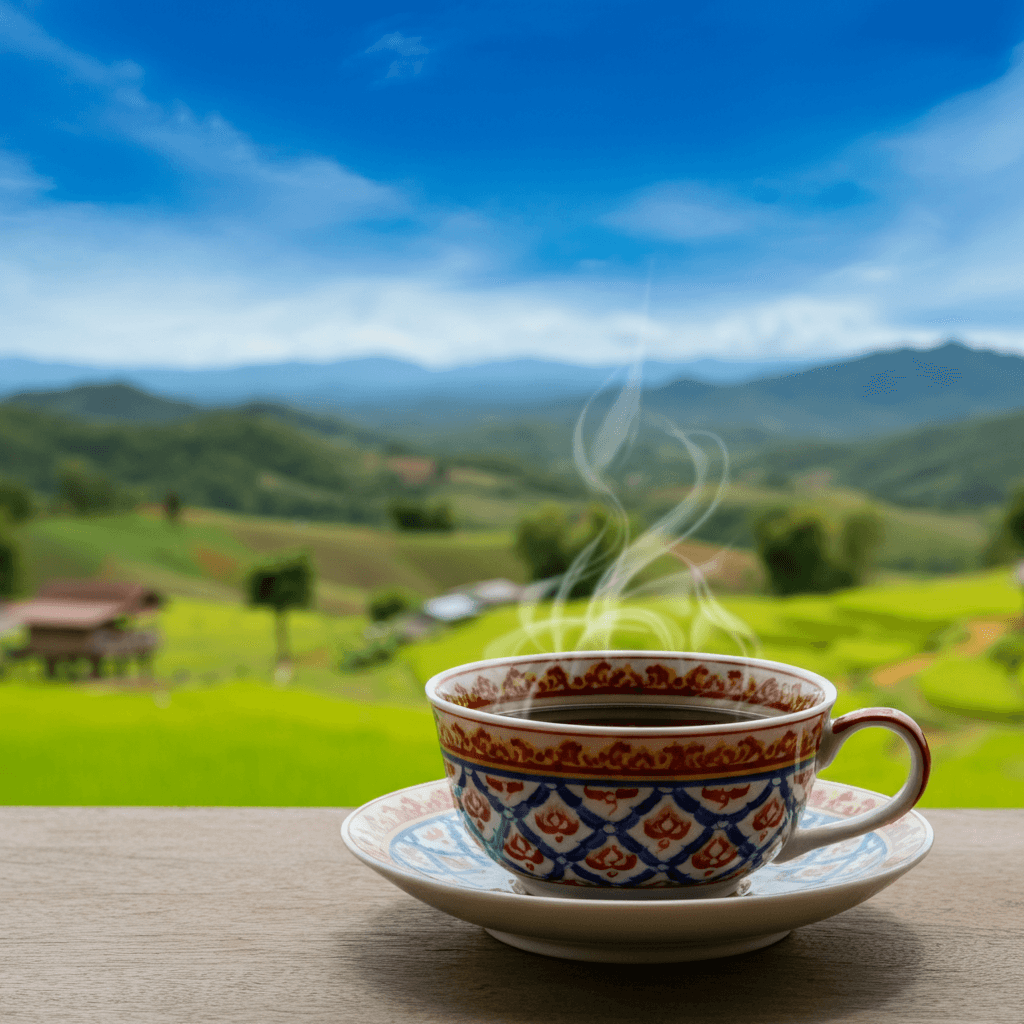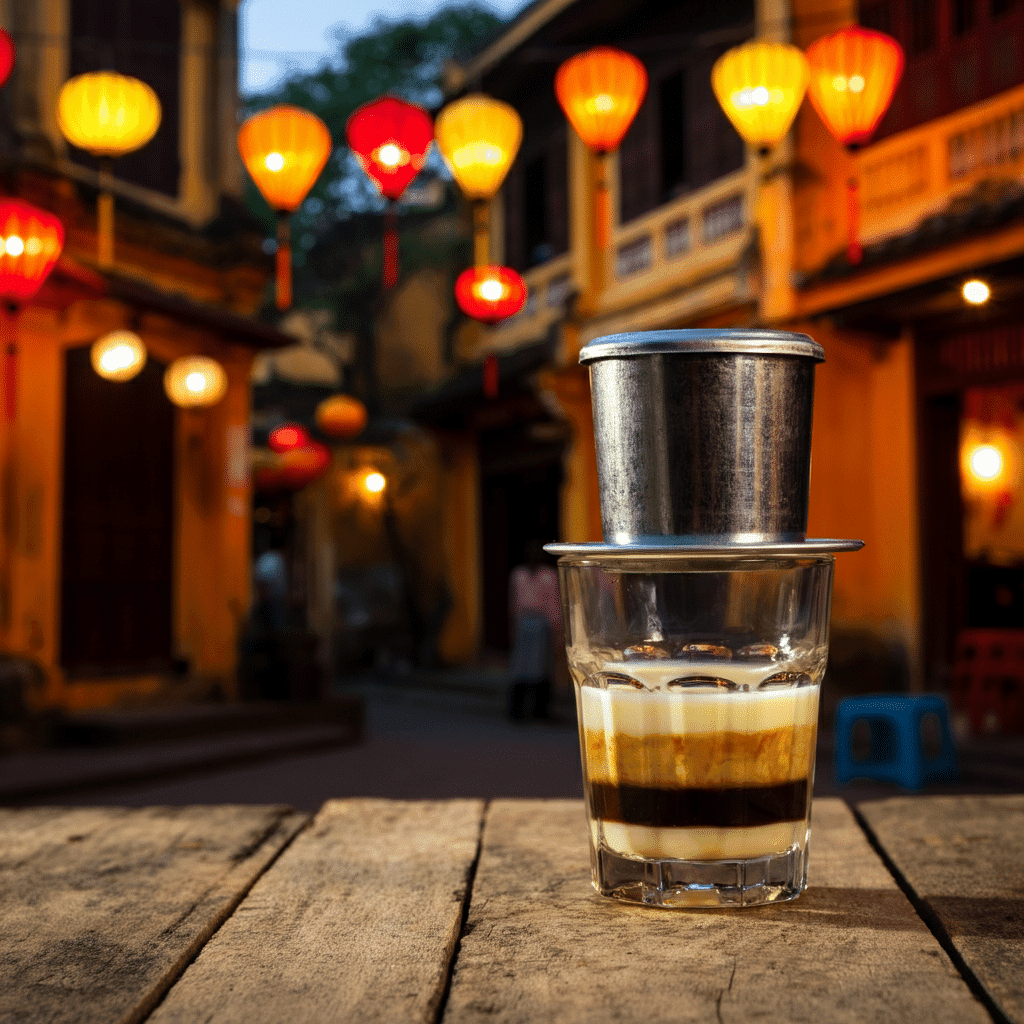
Coffee is more than just a drink—it’s an experience, a culture, and a passion. For travellers and coffee enthusiasts, exploring regional coffee cultures can lead to some truly unique discoveries. Two standout contenders in Southeast Asia’s buzzing coffee scene are Thai coffee and Vietnamese coffee. Both are beloved for their bold flavours, distinct brewing traditions, and cultural significance, but how do they stack up against each other in terms of strength and character?
If you’ve ever sipped on a rich Vietnamese cà phê sữa đá or tried a creamy Thai iced coffee, you might be wondering—is Thai coffee stronger than Vietnamese coffee? We’re here to break down the flavour profiles, caffeine content, brewing techniques, and more, so you’ll be fully equipped to decide which one suits your taste buds best.
Thai Coffee vs. Vietnamese Coffee: Flavor, Caffeine, and Brewing
| Aspect | Thai Coffee | Vietnamese Coffee |
|---|---|---|
| Flavor Profile | Smooth, sweet, and aromatic with hints of spices like cardamom or star anise. Often combined with condensed milk. | Bold, intensely robust, with a full-bodied richness. Paired with sweetened condensed milk. |
| Caffeine Content | Medium to strong. Typically uses a mix of robusta and arabica beans (lower caffeine content than pure robusta). | High. Primarily made with robusta beans, which have a naturally higher caffeine concentration. |
| Brewing Technique | Brewed using a “tungdtom” cloth filter, drip method, or espresso techniques, then mixed with milk and sugar. | Slow-dripped using a phin filter for concentrated coffee, often served over ice or with condensed milk. |
The Unique Flavour Profiles of Thai and Vietnamese Coffee
Both Thai and Vietnamese coffee offer highly distinctive flavour experiences. However, their differences go beyond just taste; they tell a story of each country’s coffee culture.
Thai Coffee

Thai coffee is known for its smooth, sweet, and aromatic profile. It often features a blend of robusta beans, which are widely grown in Thailand, with the occasional mix of arabica beans from the northern mountains. Traditionally, Thai coffee is combined with condensed milk, cane sugar, and sometimes cardamom or star anise, giving it an unmistakable spiced twist. This flavourful combination is usually enjoyed iced, making Thai coffee a refreshing go-to option in the sweltering heat.
Vietnamese Coffee

Vietnamese coffee, on the other hand, is famously bold and intensely robust in flavour. This is largely due to Vietnam’s heavy use of robusta beans, which have a naturally higher caffeine content than arabica beans. Vietnamese coffee is typically paired with sweetened condensed milk, and its iconic preparation style—using a phin filter—results in a slow-dripped coffee with concentrated, full-bodied richness.
Whether you prefer Thai coffee’s spice-infused sweetness or Vietnamese coffee’s unapologetically bold flavour, both are unique and worth trying.
Caffeine Content of Thai vs. Vietnamese Coffee
When it comes to caffeine strength, Vietnamese coffee tends to edge out Thai coffee. Why? The answer lies in the beans.
- Robusta Beans in Vietnam’s coffee are packed with about 2.7% caffeine content compared to 1.5% in arabica beans, making the brew naturally stronger.
- Thai Coffee Blends often include robusta beans but are more likely to feature a mix with arabica, which softens the caffeine punch.
That being said, the way these coffees are prepared matters too. Vietnamese coffee made with a phin filter produces a denser, more concentrated cup compared to Thai coffee, which is usually brewed with a cloth filter or drip method and then diluted with ice.
Bottom Line:
If you’re after sheer caffeine intensity, Vietnamese coffee is likely the stronger option. But if you value a balance between strength and sweetness, Thai coffee is equally satisfying.
Brewing Techniques That Define Each Coffee
Thai Brewing Techniques
Thai coffee is typically brewed using a “tungdtom” cloth filter, similar to a sock filter. Coffee grounds are boiled or steeped, filtered, and then mixed with condensed milk, sugar, or spices. Modern cafes, however, may incorporate pour-over or espresso techniques adapted for Thai-style flavour profiles.
Popular Thai iced coffee is often served with a mix of coconut milk, condensed milk, or even a splash of tea, creating a luxurious drink that’s surprisingly easy to prepare at home.
Vietnamese Brewing Techniques
Vietnamese coffee is all about the phin filter—a small metal filter that drips coffee slowly over condensed milk. This method not only enhances the strength and flavour but also creates a highly concentrated brew that pairs perfectly with ice or milk for the iconic cà phê sữa đá.
From these preparation steps alone, it’s clear why Vietnamese coffee leans towards a bold and strong punch, while Thai coffee adopts a lighter, sweeter profile.
The Cultural Significance of Coffee in Thailand and Vietnam
Thailand’s Coffee Culture
Coffee in Thailand is deeply tied to the café culture that has flourished in recent years, with chic coffee houses and traditional roadside vendors catering to both locals and tourists. Thai iced coffee is a common street-side staple, often served in a plastic bag filled with ice. For many Thais, coffee is more than just an energy boost—it’s a refreshing break from the tropical heat.
Vietnam’s Coffee Culture
Coffee in Vietnam goes beyond cafés—it’s a daily ritual steeped in tradition. From its colonial connections to its rise as the world’s second-largest coffee producer, Vietnam has turned robusta beans into a proud cultural emblem. Street-side cafes serve phin-brewed coffee that’s meant to be savoured slowly, reflecting the country’s relaxed approach to life.
Both Thailand and Vietnam cherish coffee not just as a drink, but as an integral part of their identity. Their distinctive ways of preparing and enjoying coffee offer a glimpse into their rich cultural fabrics.
Social and Environmental Impact of Coffee Production
While coffee production fuels the economies of both Thailand and Vietnam, they approach sustainability differently.
- Thailand has made strides in environmentally sustainable coffee farming, particularly in the northern highlands, where hill tribes grow arabica beans using eco-friendly techniques.
- Vietnam, as a global coffee giant, faces challenges with deforestation and water usage but is actively investing in sustainable farming practices to align with environmental goals.
Supporting local coffee from these regions often means supporting small-scale farmers and sustainability efforts—a win-win for coffee lovers who care about their impact.
Availability and Global Popularity
Vietnamese coffee has a far greater global footprint, largely thanks to its massive production scale and the popularity of beverages like cà phê sữa đá and egg coffee. Thai coffee, while less globally visible, enjoys niche popularity in specialty cafés and among adventurous travellers seeking unique flavours.
Pro Tip:
If you’re unable to travel, both Thai and Vietnamese coffee products can be found online. Specialty roasters and retailers often carry authentic options to help you enjoy these coffees at home.
Coffee Enthusiasts—Which Will You Choose?
Now that you know the lowdown on Thai coffee and Vietnamese coffee—from their distinct flavour profiles to their caffeine content, brewing techniques, and cultural significance—it’s time to answer the ultimate question. Which one do you prefer? Whether you lean towards Thai coffee’s warm spices or crave the bold richness of Vietnamese coffee, there’s no wrong choice.
If you’ve tried either (or both), we’d love to hear your thoughts! Share your experiences in the comments below or explore more coffee comparisons right here on our blog.
Cheers to your next perfect cup! Learn more about Dirty Latte, and why it’s becoming more trending in Thailand.

Comments